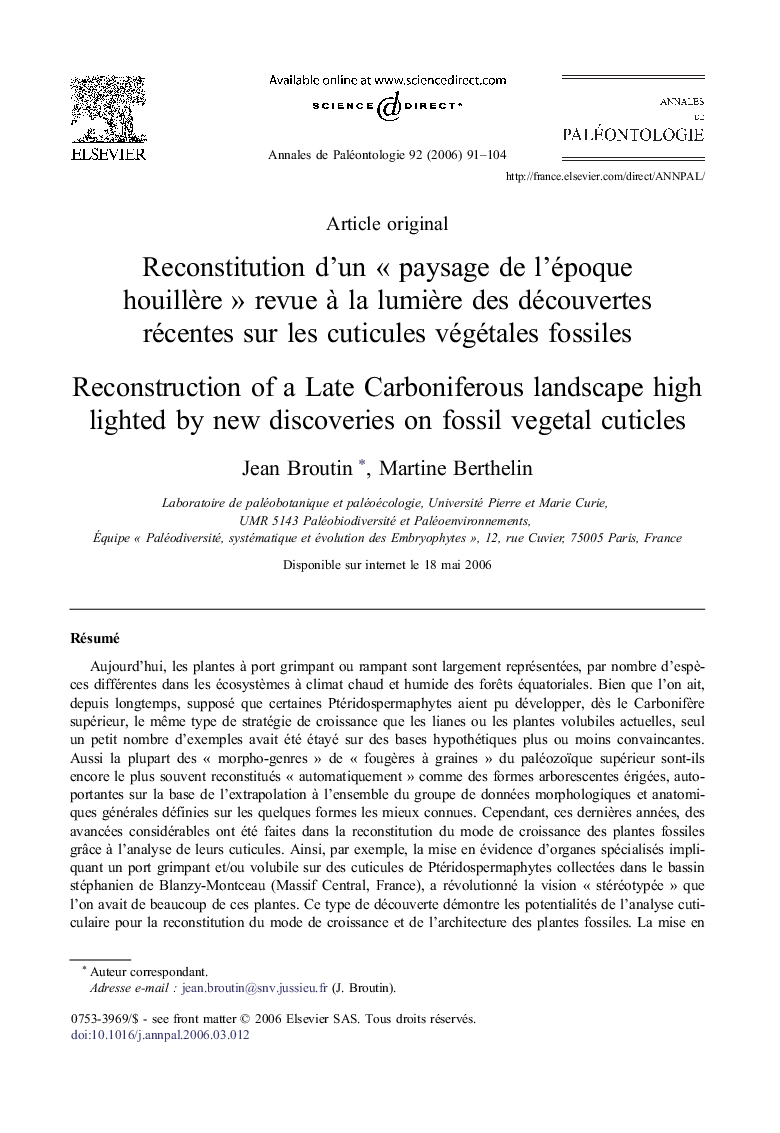| Article ID | Journal | Published Year | Pages | File Type |
|---|---|---|---|---|
| 4745546 | Annales de Paléontologie | 2006 | 14 Pages |
Abstract
To date, plants with a climbing or scrambling growth habit are widely represented in equatorial forest ecosystems, with a warm and humid climate, with a variety of different species. Although it has been speculated repeatedly that several Late Carboniferous seed ferns applied the same growth strategies as modern vines and /or lianas, only few examples have been substantiated in sufficient details. Most Paleozoic seed ferns are reconstructed as free-growing erect trees. However, these last years, new discoveries about the growth habits of fossil plants have been highlighted on the basis of cuticular material. In this way, different types of climbing organs of seed ferns, reported on pteridosperm cuticles collected from the Stephanian basin of the Blanzy-Montceau (central France), have revolutionized the stereotype of “free-growing erect trees” that we had about these plants. These discoveries demonstrate the potential of cuticular analysis for the reconstruction of growth habits of fossil plants. Moreover they exemplify that climbing and scrambling became common life strategies among Late Carboniferous seed ferns. The increasing proportion of climbing seed ferns in the Stephanian, interpreted as an expression of changing structures of Late Paleozoic coal swamp forests, lead to modify the “classical” reconstructions of the Late Carboniferous landscapes.
Related Topics
Physical Sciences and Engineering
Earth and Planetary Sciences
Palaeontology
Authors
Jean Broutin, Martine Berthelin,
